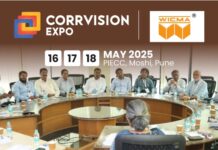A study of eight ambitious philanthropic initiatives that seek to solve some of India’s most daunting social challenges.
Boston, November 16, 2018: India is experiencing a surge in philanthropic activity, with donors increasingly using their resources to take on some of the country’s biggest social challenges. The Bridgespan Group’s new report, Bold Philanthropy in India: Insights from Eight Social Change Initiatives, highlights the efforts of bold philanthropists who are working to eliminate tuberculosis in India, lift millions of rural farmers irreversibly out of poverty, dramatically improve learning outcomes, and help the nation’s municipal services keep pace with a rising urban population, among other challenges.
According to Bridgespan Partner and Co-author of the report, Pritha Venkatachalam, “Many philanthropists in India are pivoting from checkbook giving – investing mostly in infrastructure projects, such as building schools or hospitals – to thinking strategically and ambitiously about how to drive social change. However, because there is so little information on their approaches to bold giving, other philanthropists with similar aims lack reference material to build on.”
Dr. K P Krishnan, Secretary, Ministry of Skill Development and Entrepreneurship said, “Public expenditure in India today is close to a quarter of GDP. Philanthropy has a long tradition in our history, and is a core value of Indian philosophy. It is not coincidental that with the return of serious wealth in India since the 1990s, we also see a return of very bold philosophy to giving. It is always immediately attractive to feed a poor child with money from a philanthropist. But can we put more thought into giving with greater impact? I would push for a bigger cause – to influence public policy and to support core state systems for social change in the Indian context. The third sector needs to develop the appropriate institutions, processes and systems to deliver this.”
To help fill these knowledge gaps, Bridgespan, with support from the Bill & Melinda Gates Foundation and the Omidyar Network, researched a wide array of philanthropic initiatives in India. To identify which of those efforts are truly “bold”, Bridgespan screened for a variety of factors, including philanthropic funding of at least INR 27 crores (USD 4 million); clear goals; and a pathway toward addressing a seemingly intractable social problem. The report’s aim is to share philanthropists’ strategic approaches to bold giving and highlight opportunities, challenges, and lessons learned.
“To be clear, the bold initiatives that we have profiled by no means constitute all of India’s audacious philanthropic efforts,” says Co-author and Bridgespan Case Team Leader Niloufer Memon. “Rather, we sought to gather a representative sample in hopes of inspiring a wide swath of other philanthropists and foundations working in India to think big.”
The Bridgespan team analyzed eight bold initiatives and identified six unique roles that bold philanthropy can play in improving people’s lives:
- Build innovative solutions. Two of the bold initiatives involve developing a novel solution to a social challenge and demonstrating potential for impact at scale: Google and Tata Trust’s Internet Saathi employs local women (“Saathis”) to help improve digital literacy among 15 million rural women in India; the Gates Foundation’s “Mainstreaming Private Healthcare Systems for Tuberculosis Control” incentivizes private healthcare providers to support mainstream tuberculosis-control efforts.
- Scale proven solutions. With this approach, philanthropists identify an intervention that is working (based on strong evidence) and extend its impact into new geographic frontiers or populations. Case in point: Digital Green’s Video-based Knowledge Sharing, funded by the Gates Foundation, where government frontline workers use locally produced, instructional videos to introduce more than 1.5 million smallholder farmers to best practices that improve crop yields.
- Support community-driven development. Philanthropists and NGOs deeply engage the community and work collectively to solve a social problem through a bottom-up approach. Funded by Tata Trusts and its associate organization, Collectives for Integrated Livelihood Initiatives, Lakhpati Kisan helps more than 101,000 tribal households generate an income that will keep them from sinking back into poverty. The effort is one example of working with local people to drive change from within the community.
- Strengthen or reform systems. This bold-giving pathway focuses on influencing the underlying structures, relationships, or beliefs that characterize a social ecosystem. This approach usually involves coordinating the efforts of diverse stakeholders, such as government, NGOs, communities, and donors to strengthen a system. Bridgespan’s analysis of Rajasthan Adarsh Yojana, funded by The Michael & Susan Dell Foundation, offers insights into how philanthropy helped reform one of India’s poorest performing education systems.
- Build a field. Two philanthropic initiatives in Bridgespan’s study focus on investing in efforts to strengthen or develop an entire social-sector field. Kris Gopalakrishnan, the executive vice chairman of Infosys, launched the Centre for Brain Research, to help fill a knowledge gap in the field of India-focused, neuroscience research and thereby help the 4 million Indians living with dementia. And then there is the eGovernments Foundation (eGov), funded by Nandan Nilekani, co-founder of Infosys, and Srikanth Nadhamuni, CEO of Khosla Labs. eGov has built an open-source digital platform to help India’s urban local governments provide municipal services. This platform has both government and citizen facingmodules that enable agencies to improve their operations and citizens to seamlessly access municipal services.
- Inform public policy. This approach involves providing evidence and input to inform the government’s efforts to reform laws, policies, and regulations. The William and Flora Hewlett Foundation is the primary philanthropy behind the Annual Status of Education Report (ASER), which measures the basic reading and math skills of approximately 600,000 rural children across every rural district in India. ASER’s alarming statistics have shifted India’s national discourse (as well as global discourse) from focusing on enrollment rates to improving learning outcomes.
“This research is a first step toward providing some answers on how these bold approaches propel social change, and how these approaches might help philanthropists and NGOs break through the roadblocks that impede progress,” says Co-author and Bridgespan Principal Donald Yeh. “Although we identified these six roles in the Indian context, they are so foundational to the global philanthropic ecosystem that they can be thought of as archetypes of bold giving.”
Newsvoir


































